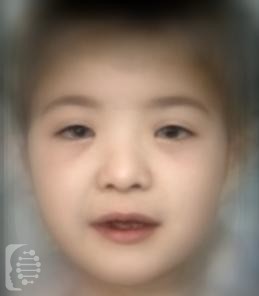What is Hennekam Lymphangiectasia-Lymphedema Syndrome 1 (HKLLS1)?
Hennekam Lymphangiectasia-Lymphedema Syndrome 1 is a rare disease that affects the lymphatic system. The lymphatic system also involves the circulatory and immune systems. It is what transports immune and lymph cells around the body.
Symptoms and life expectancy with the syndrome can vary widely between patients, including those within the same family. Some patients survive into adulthood. There are currently 50 cases of the syndrome reported worldwide. The syndrome is usually recognized at birth.
This syndrome is also known as:
Hennekam Lymphangiectasia-lymphedema Syndrome; Hennekam syndrome; Lymphatic Dysplasia, Generalized
What gene change causes Hennekam Lymphangiectasia-Lymphedema syndrome 1 (HKLLS1)?
It is caused by mutations in the CCBE1, FAST4 or ADAMTS3 genes. Hennekam syndrome is inherited in an autosomal recessive pattern.
Autosomal recessive inheritance means an affected individual receives one copy of a mutated gene from each of their parents, giving them two copies of a mutated gene. Parents, who carry only one copy of the gene mutation will not generally show any symptoms but have a 25% chance of passing the copies of the gene mutations onto each of their children.
What are the main symptoms of Hennekam Lymphangiectasia-Lymphedema Syndrome 1 (HKLLS1)?
Lymphangiectasia, or lymph vessels that are swollen, is the most common symptom of Hennekam syndrome. This tends to affect most severely the vessels that carry lymph cells to and from the intestines. This can also affect the skin, kidneys, and heart of an affected individual or patient.
Another main symptom is Lymphedema, which is a build up of fluid in the body that causes puffiness and swelling.
Unique facial features include a flattened middle part of the face, puffy eyelids, widely-spaced eyes, small ears, and mouth. A small head and premature fusing of the skull bones are also recognized features of Hennekam syndrome.
Additional features of the condition include varying degrees of intellectual disability, anemia (low red blood cell count), multiple spleens, kidney malposition, genital abnormalities, and umbilical hernia. Other symptoms may include excessive body hair, scoliosis, and clubfoot.
Possible clinical traits/features:
Coronal craniosynostosis, Cryptorchidism, Cutaneous finger syndactyly, Conical incisor, Epicanthus, Erysipelas, Ectopic kidney, Conductive hearing impairment, Malar flattening, Delayed eruption of teeth, Delayed skeletal maturation, Smooth philtrum, Autosomal recessive inheritance, Sensorineural hearing impairment, Oligodontia, Seizure, Pachygyria, Periorbital edema, Pericardial effusion, Pericardial lymphangiectasia, Vesicoureteral reflux, Retrognathia, Pleural effusion, Pleural lymphangiectasia, Broad forehead, Hirsutism, Horseshoe kidney, Hyperactivity, Hydronephrosis, Mild postnatal growth retardation, Hypertelorism, Hypoalbuminemia, Hypoplastic iliac wing, Short foot, Glaucoma, Gingival overgrowth, Depressed nasal bridge, Narrow mouth, Narrow palate, Pectus excavatum, Joint contracture of the hand, Intellectual disability, Intestinal lymphangiectasia, Low-set ears, Lymphedema, Atrial septal defect, Bilateral single transverse palmar creases, Wide nasal bridge, Protein-losing enteropathy.
How is it diagnosed?
To find out if someone has a diagnosis of Hennekam Lymphangiectasia-Lymphedema syndrome 1 (HKLLS1), it is important to have a consultation and evaluation with a clinical genetic specialist. Specialists may also suggest specific genetic testing or other types of tests to help reach a diagnosis. FDNA’s AI technology can help speed up the diagnostic process by analyzing facial features and other health information.

